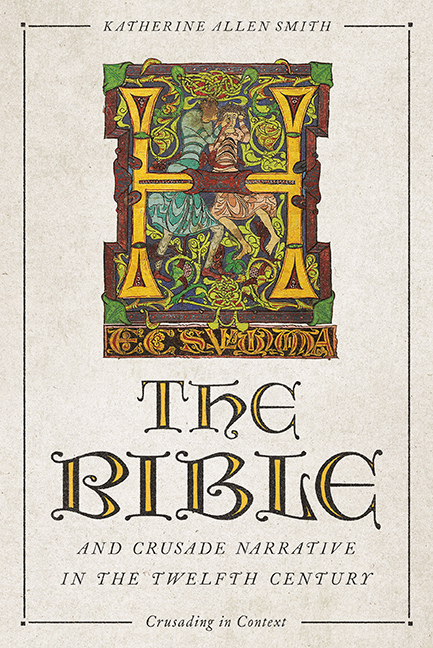Book contents
- Frontmatter
- Contents
- Acknowledgements
- List of Abbreviations
- Introduction
- Chapter 1 History and Biblical Exegesis in the Latin West
- Chapter 2 The Bible in the Chronicles of the First Crusade
- Chapter 3 Into the Promised Land
- Chapter 4 Babylon and Jerusalem
- Conclusion
- Appendix 1 Tables and Charts of Biblical References
- Appendix 2 List of Biblical References in the Texts
- Bibliography
- Index
Chapter 4 - Babylon and Jerusalem
Published online by Cambridge University Press: 26 April 2020
- Frontmatter
- Contents
- Acknowledgements
- List of Abbreviations
- Introduction
- Chapter 1 History and Biblical Exegesis in the Latin West
- Chapter 2 The Bible in the Chronicles of the First Crusade
- Chapter 3 Into the Promised Land
- Chapter 4 Babylon and Jerusalem
- Conclusion
- Appendix 1 Tables and Charts of Biblical References
- Appendix 2 List of Biblical References in the Texts
- Bibliography
- Index
Summary
But ours, with minds uplifted
Unto the heights of God,
With our whole heart's desiring,
To take the homeward road,
And the long exile over,
Captive in Babylon,
Again unto Jerusalem,
To win at last return.
— Peter Abelard, “Sabato ad Vesperas”While many contemporaries were struck by the novelty of the crusading enterprise, it could also be read as the latest chapter in a very old story, one that encompassed the entirety of sacred history and deeply informed the medieval Christian worldview. This was a tale of two cities, created, in the famous words of Saint Augustine, by two kinds of love: “the love of self (amor sui), extending even to the contempt of God” and “the love of God (amor Dei), extending to the contempt of self.” In the first, earthly city (civitas terrena) where the devil held sway as sovereign (princeps), pride and ambition drove men to compete and oppress their fellows while, by contrast, the inhabitants of the city of God (civitas Dei) sought only to glorify God and live in a state of harmony. Inspired by Scripture, Augustine identified the two cities allegorically with Babylon, which he defined as “confusion,” and Jerusalem, which he labeled “the vision of peace.” In subsequent centuries, Augustine's vision of the two cities, transmitted via the City of God and his extremely popular Enarrationes in Psalmos, remained a touchstone of medieval theology, history, and political theory. But, whereas Augustine had resisted a literal equation of the two cities to worldly counterparts – viewing, as he did, the idea of a Christian polity as a contradiction in terms – later writers explicitly identified the two cities with various worldly powers and institutions, including the Holy Roman Empire and the Church. Thus, by the ninth century Hincmar of Reims (d. 882) could write that “as Augustine showed in the book of The City of God, the two cities are intermingled (that is, Jerusalem, which is the Church, and Babylon, which is worldly power).” The early chroniclers of the First Crusade participated in this tradition, building upon the work of eleventhcentury reformers and polemicists who compared the two cities to the papal and imperial factions of their own day. But the crusade actualized the conflict between the two cities in a new way when a Christian army challenged a new Babylon for control of Jerusalem.
- Type
- Chapter
- Information
- The Bible and Crusade Narrative in the Twelfth Century , pp. 155 - 210Publisher: Boydell & BrewerPrint publication year: 2020



